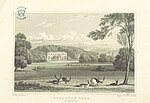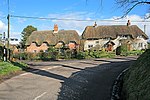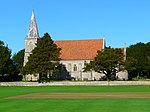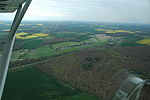Woodmancott
Former civil parishes in HampshireHampshire geography stubsMicheldeverVillages in Hampshire

Woodmancott is a village and former civil parish, now in the parish of Micheldever, in the Winchester district of Hampshire, England. Its nearest town is Winchester, which lies approximately 9.3 miles (15.0 km) south-west from the hamlet, just of the M3. The village is notable for Blissfields Festival, hosted each summer at Vicarage Farm since 2011. In 1961 the parish had a population of 31. On 1 April 1985 the parish was abolished and merged with Micheldever and Candovers.
Excerpt from the Wikipedia article Woodmancott (License: CC BY-SA 3.0, Authors, Images).Woodmancott
Rownest Wood Lane, Winchester Micheldever
Geographical coordinates (GPS) Address Nearby Places Show on map
Geographical coordinates (GPS)
| Latitude | Longitude |
|---|---|
| N 51.1789 ° | E -1.195 ° |
Address
Rownest Wood Lane
SO21 3BN Winchester, Micheldever
England, United Kingdom
Open on Google Maps










